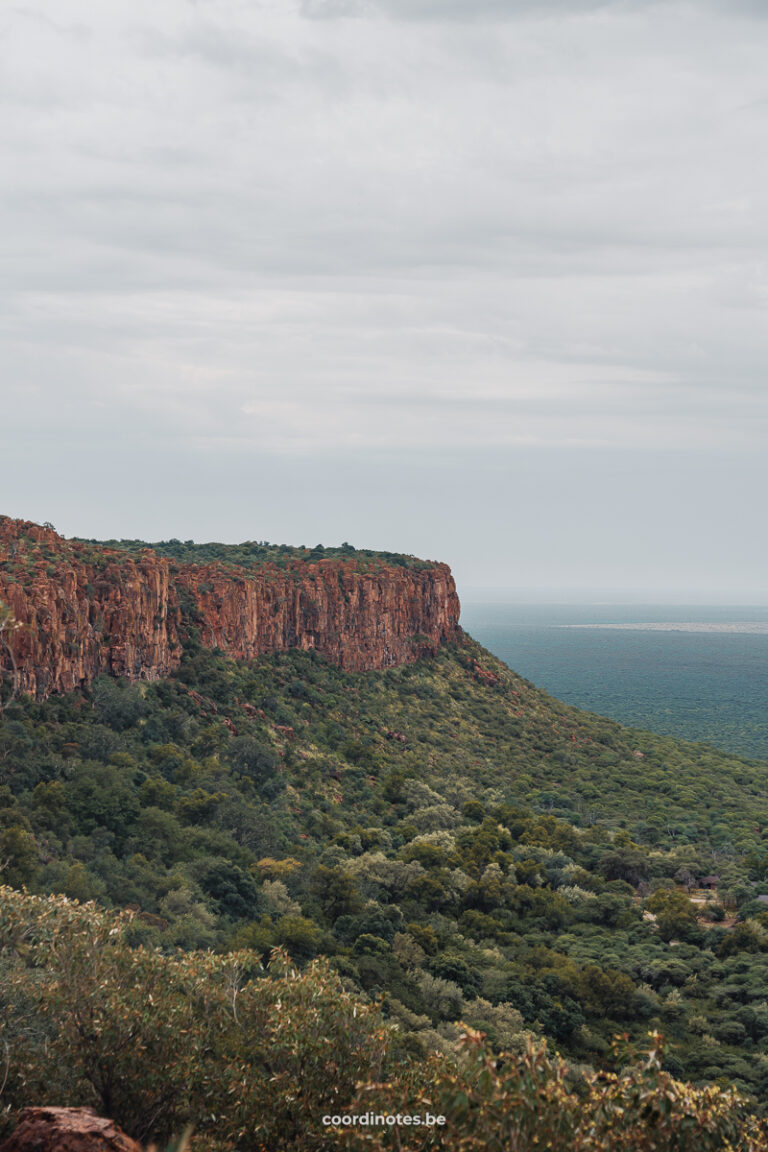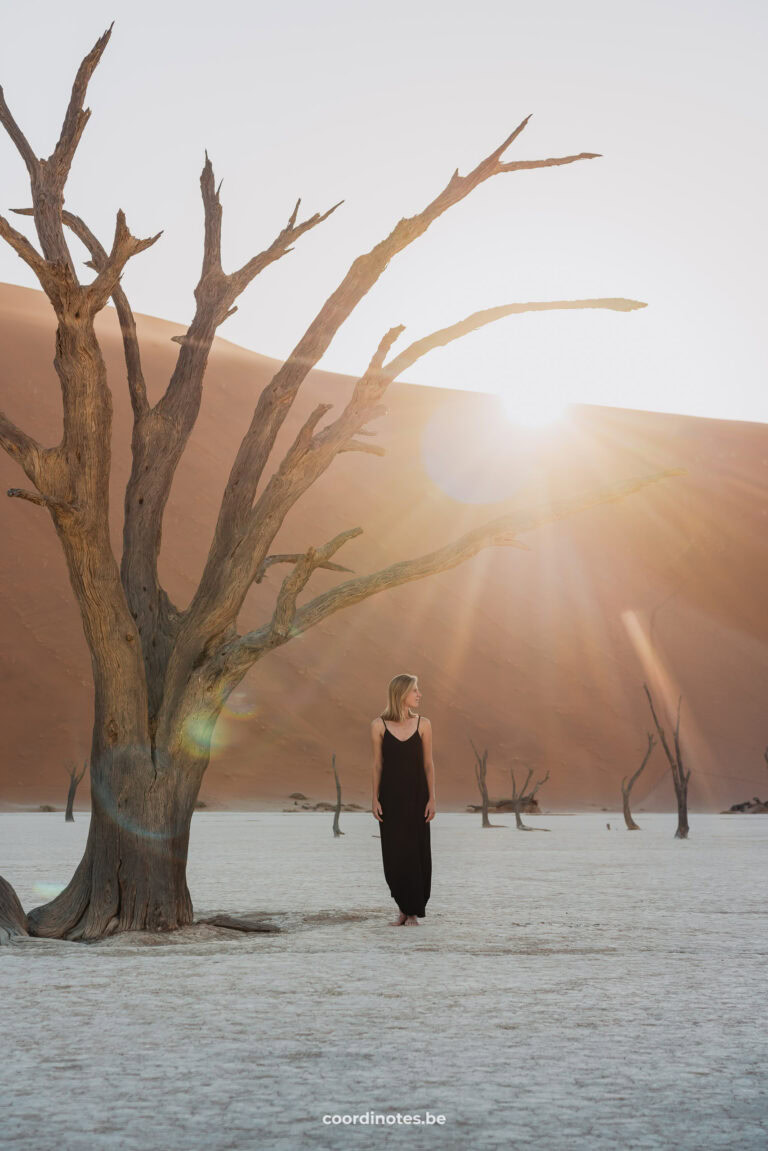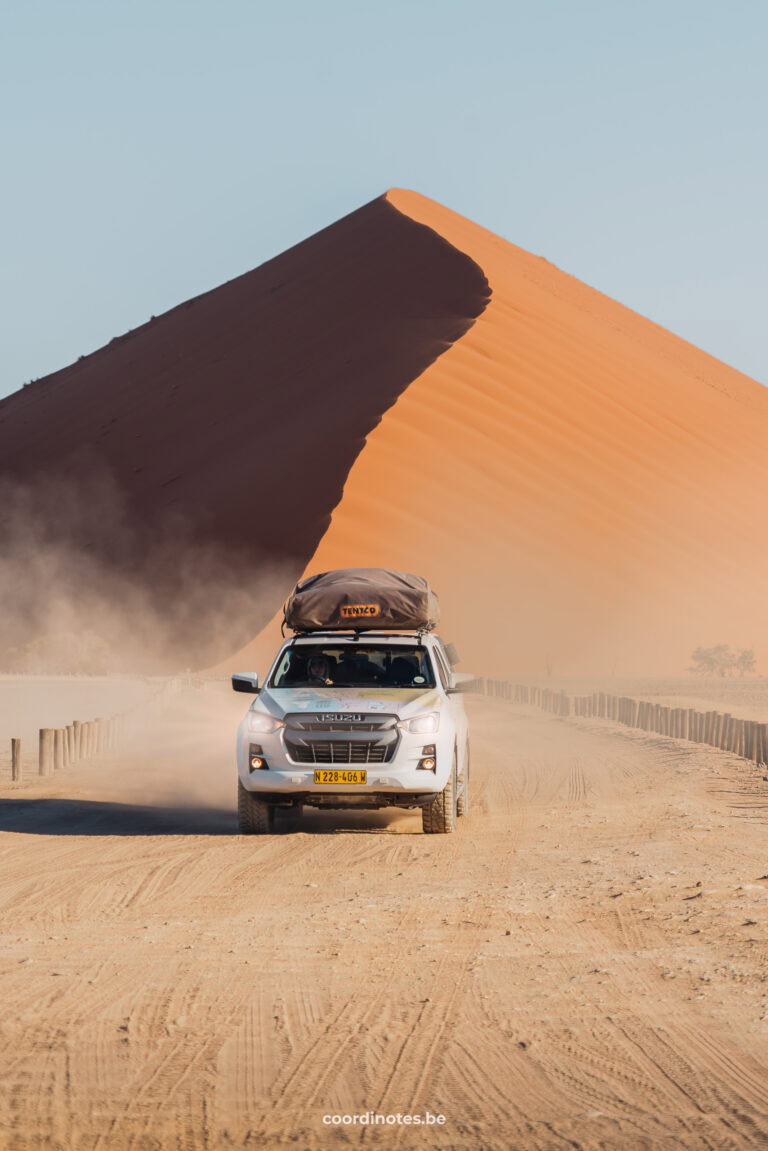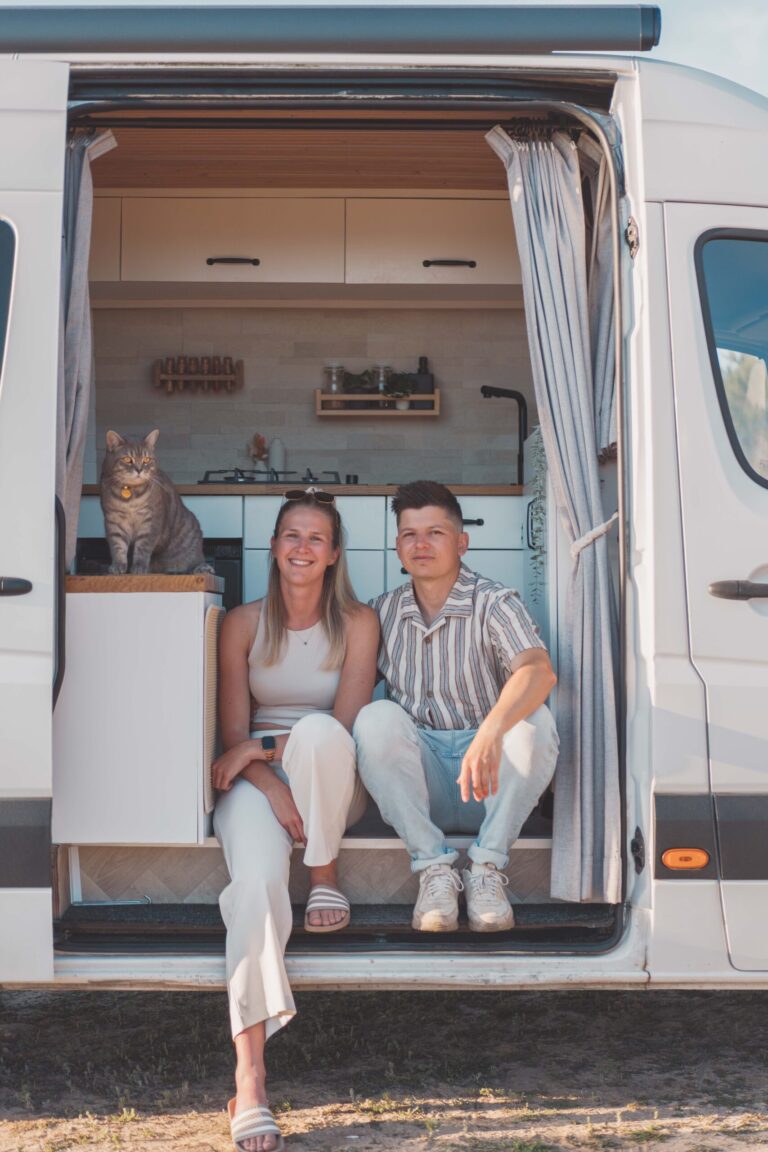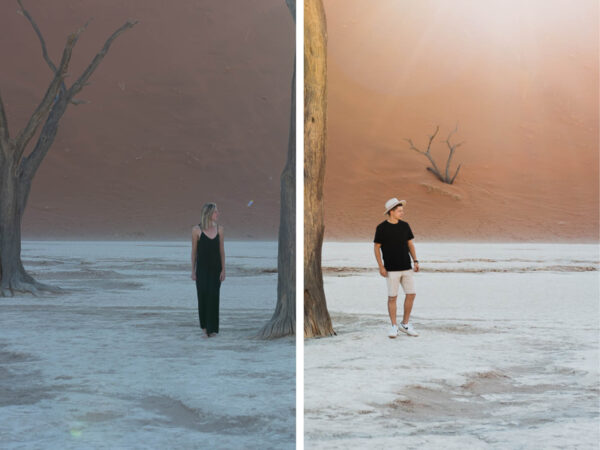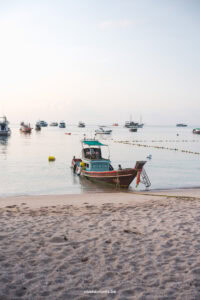Overview
This post may contain affiliate links, which means we may receive a small commission, at no extra cost to you, if you make a purchase through our link.
This is a free way to support us and allows us to continue creating even more inspiring travel guides. Thank you for supporting the love we put into Coordinotes!
About Etosha National Park
Etosha National Park is located in the northwest of Namibia and is one of the highlights of the country. It covers an area of around 22.270 square kilometers and was proclaimed a game reserve in 1907. The park was named after the Etosha pan, the big salt pan inside the park. The name ‘Etosha’ literally means ‘Great White Place’. It is one of the most unique features of the park and attracts a wide variety of wildlife. Very exceptionally, the pan becomes a shallow layer after a good rainy season.
The landscape of Etosha is arid and vast, making it very easy to spot animals. This is exactly what makes Etosha Game Reserve, Namibia so different from other national parks.
Another unique feature of Etosha National Park is that 5 of 6 rest camps have a floodlit waterhole. This allows visitors to spot wildlife 24/7 that comes to drink at these waterholes.
Practical
Daily Conservation Fee
150 NAD per adult per day
50 NAD per vehicle per day
The times change weekly and are based on Sunrise and Sunset. You can check the opening times at the gates and rest camps.
Make sure you get out of the park on time, or if you sleep in the park, that you get to your camp on time. Otherwise you risk a very high fine.

No time to read now?
Save this post on Pinterest!
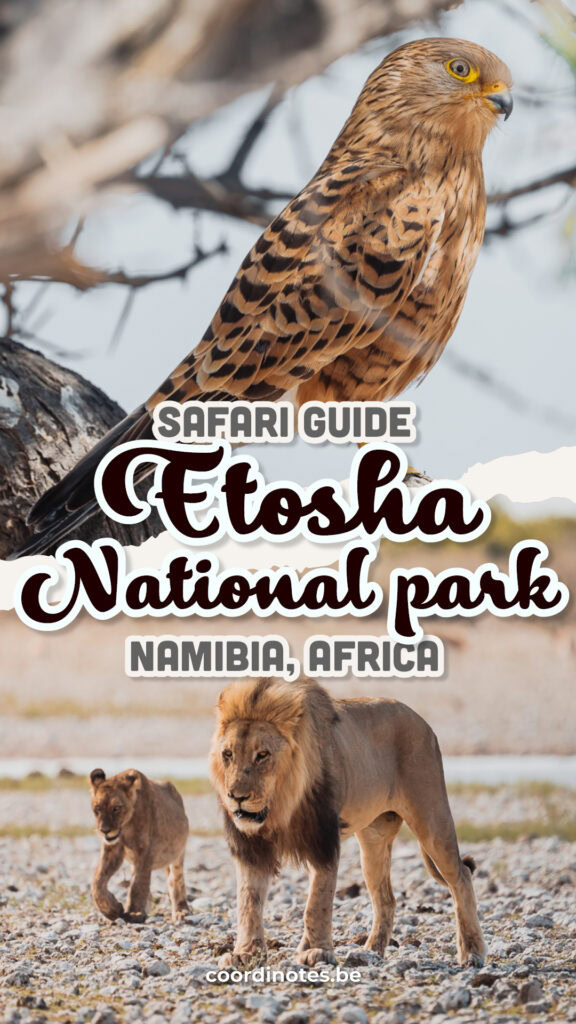
What animals can you see in Etosha
Etosha National Park is home to four of the Big 5. You won’t find any buffalos, but elephants and lions are common in the park. Leopards, on the other hand, are harder to spot, as they tend to hide in the more densely vegetated areas.
In total, Etosha Park is home to 114 species of mammals like elephants, giraffes, oryxes, wildebeests, lions, rhinos, cheetahs, and leopards. But there’s more: there are also 340 bird species, 110 different reptiles, and 16 species of amphibians. Due to the lack of water, you won’t see a lot of water animals like hippos or crocodiles.
One of the best reasons to go on safari in Etosha National Park is its healthy population of black rhinos. There is a good chance that you will see several at the unique waterholes of Etosha. We estimate that we have seen at least 20 of them!
Note: In the tourist shops at the rest camps, you can buy an illustrated wildlife book with more information about the park, a map, and some useful tips for spotting animals and you can often cross off your sightings. We highly recommend getting this!

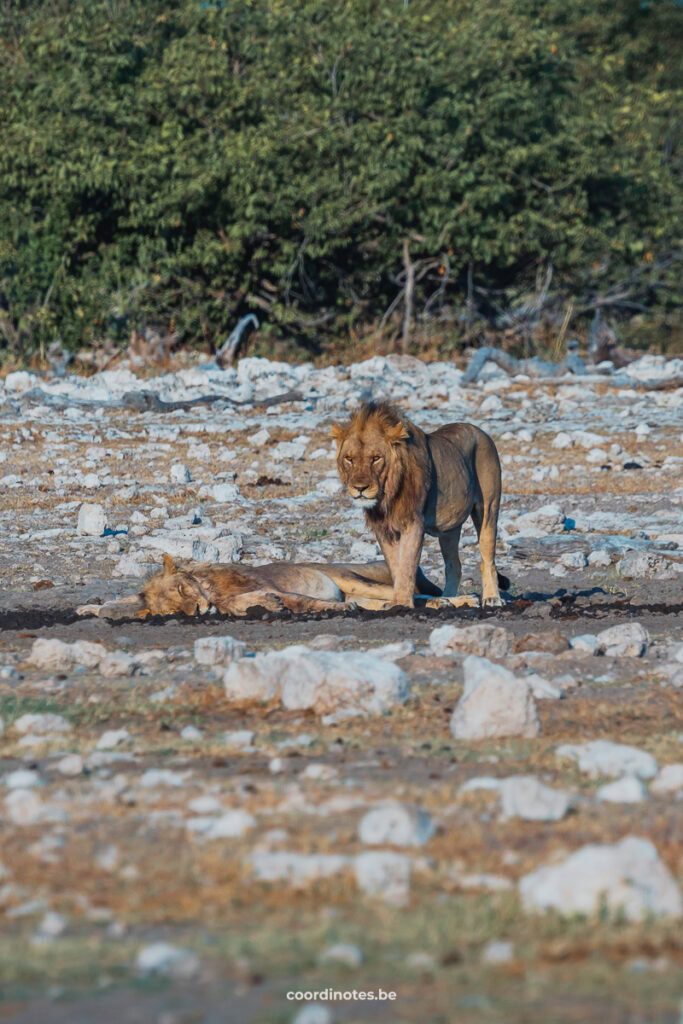
Safari
Increase your chances of spotting unique wildlife by booking a guided safari!
Entrance Gates and Areas
Entrance Gates
There are 4 entrance gates giving access to the Etosha National Park.
- North: King Nehale Gate
- East: Von Lindequist GateCrocodile Bridge Gate
- South: Andersson Gate
- West: Galton Gate
Areas
Etosha National Park is so big that it is divided into different areas. Because of the variety in landscapes and vegetation, some species are predominant in certain areas. Of course, all these areas are connected to each other and the animals can roam freely around the whole park, so sightings of a specific animal in a certain area are never guaranteed. Some typical areas are:
Okaukuejo area
The Okaukuejo area is known for its frequent lion sightings. Large herds of antelopes, elephants, and giraffes are also often seen.
We’ve seen a big group of 14 lions at Gemboksvlakte. At the Olifantsbad waterhole, we’ve seen large groups of elephants multiple times.

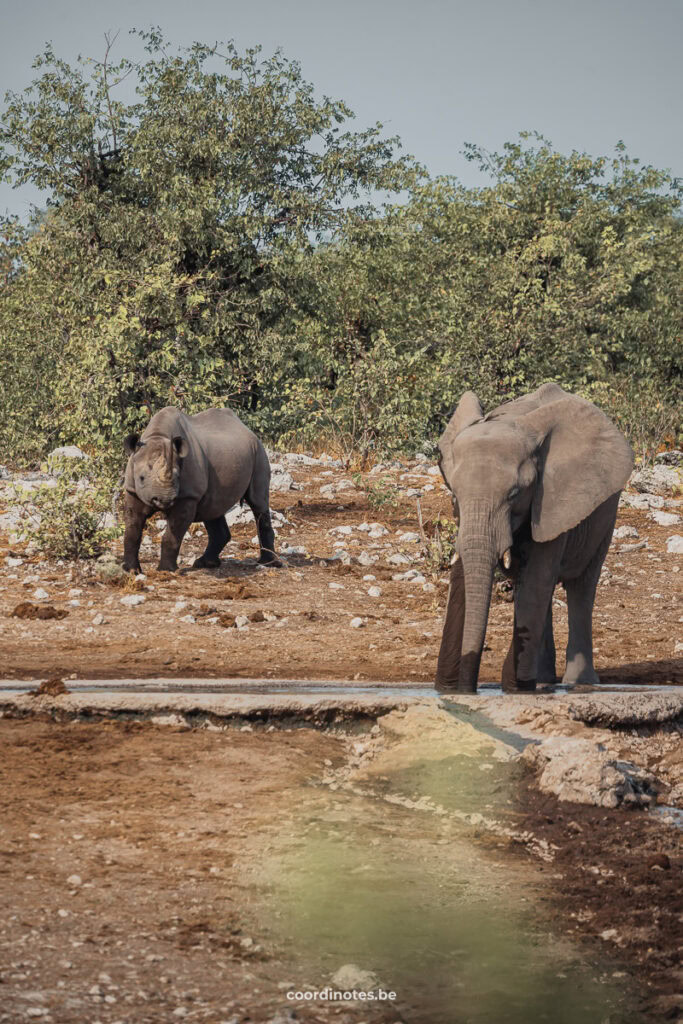
Halali area
Leopards, cheetahs, and hyenas are regularly spotted in the Halali area.
However, we’ve seen multiple lions at the waterholes of Rietfontein and Salvadora.

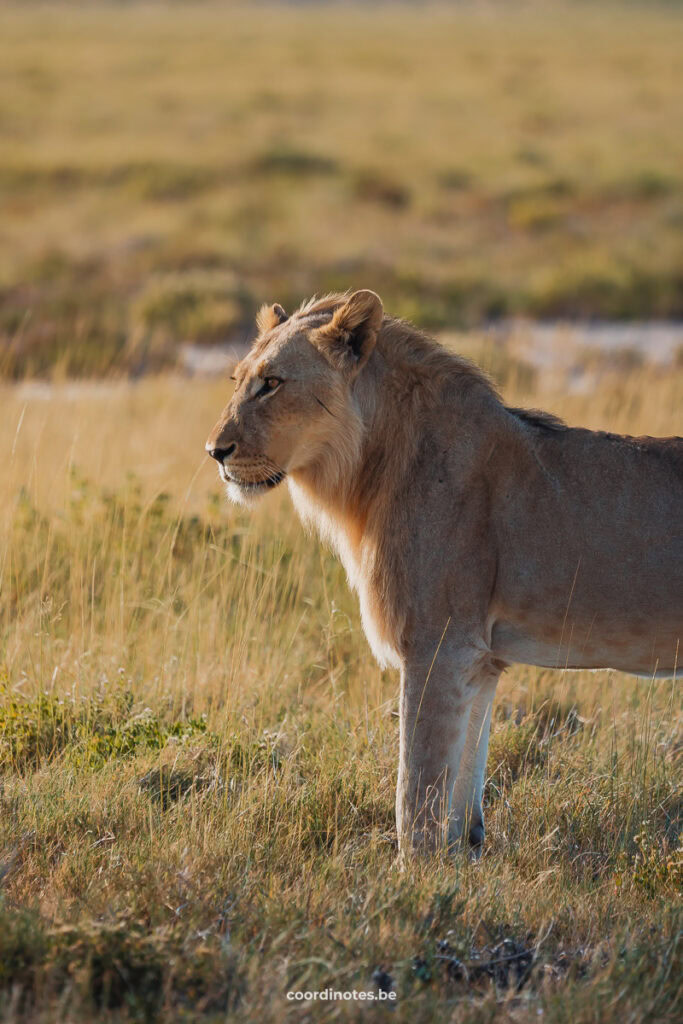
Namutoni
In this area, leopards and hyenas are also regularly spotted at the waterholes. But you also regularly encounter giraffes and elephants here. We’ve seen one leopard in the dark, lying in the dense bushes at the waterhole of Namutoni Rest Camp.
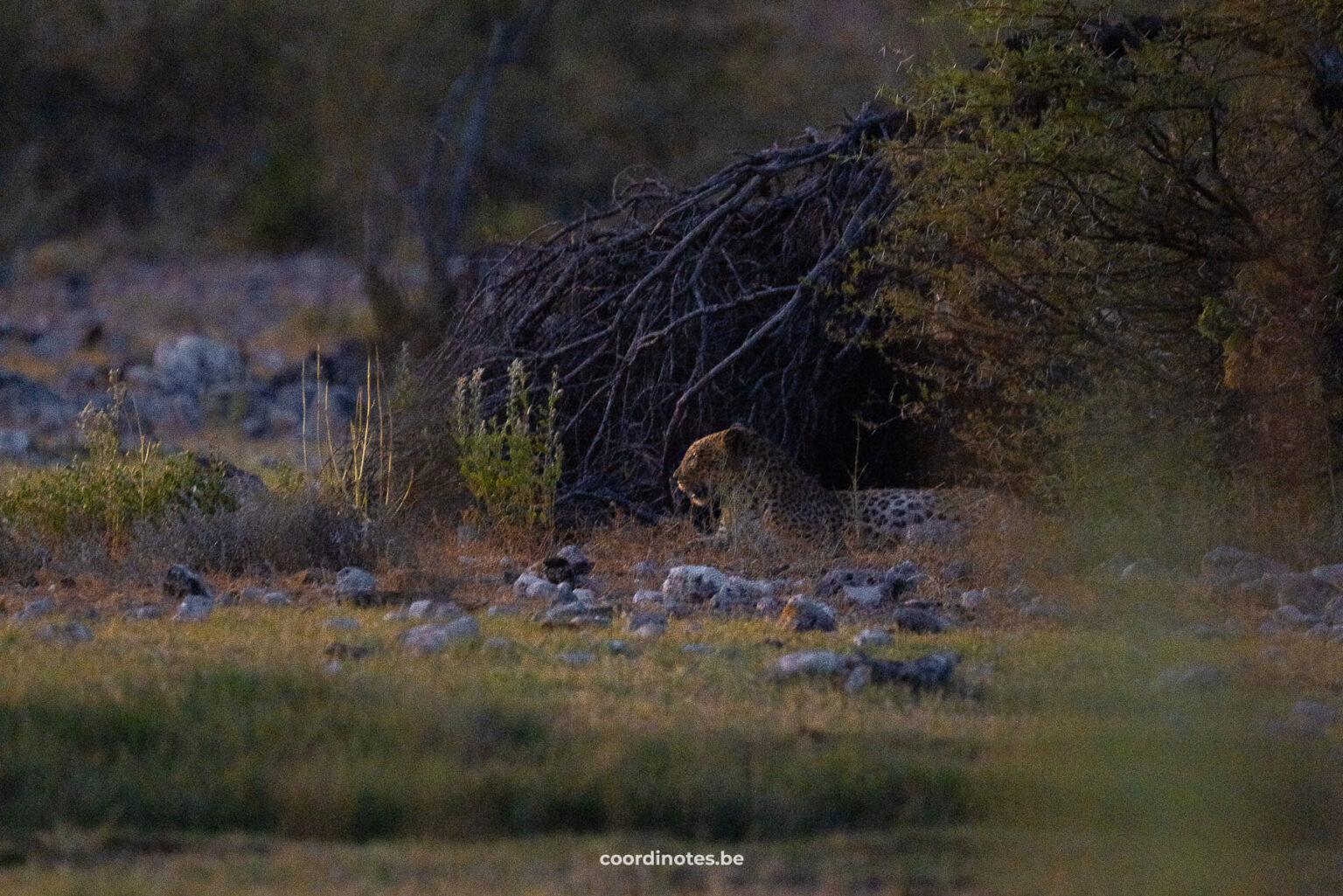
Plan your route and game drive
Plan your route
When planning your route, take into account road conditions, speed limits, and any unexpected interesting sights you may encounter along the way. So, you always have to factor in a lot of spare time. The park is vast and the distances can be long. For that reason, try not to cover too much distance in one go. Choose smaller routes and sometimes spend a little more time at water holes. Patience is often rewarded! As we mentioned above, some sightings are more frequent in certain areas, but of course, this is never guaranteed.
Note: In the rest camps, you will usually find a book in the reception in which people can write down their sightings (except for rhinos to prevent poaching!). It is always fun to have a look at these books and possibly adjust your route a bit. Keep in mind that the animals can move very quickly, but sometimes you are lucky and they might still be in the same place!

Book your transport in Namibia now!
Game drive vs Self-drive
There are two ways to go on safari in Etosha National Park: a guided game drive or a self-drive. So what’s the best way to explore the park? Well, that depends on your preferences.
During a guided game drive safari, a guide will drive you around in a high safari jeep. The advantage is that you don’t have to pay attention to the road so you can fully focus on spotting animals. You are also sitting a little higher, making it easier to see animals in more dense vegetation and see over other vehicles. During this safari, your guide can tell you more about the animals. You can choose between guided game drives in the morning, in the afternoon, and at night.
Practical
Morning and evening drive: 650 NAD per person
Night drive: 750 NAD per person
When you go for a self-drive, you can decide for yourself where you want to drive and how long you want to spend watching an animal. It is also a cheaper option compared to a guided game drive. You can drive in Etosha with any vehicle (2WD and 4WD). Compared to a safari vehicle, you will always sit a little lower.
We chose to self-drive most of the time. One morning, we joined a game drive because we could enter the park an hour earlier while it was still dark, which is not allowed when self-driving. It was definitely a unique safari experience because we saw a rare wild cat!
Tip: If you choose to self-drive, we advise you to start as early as possible. Most of the animals are often more active in the morning and nocturnal animals might be still active too.
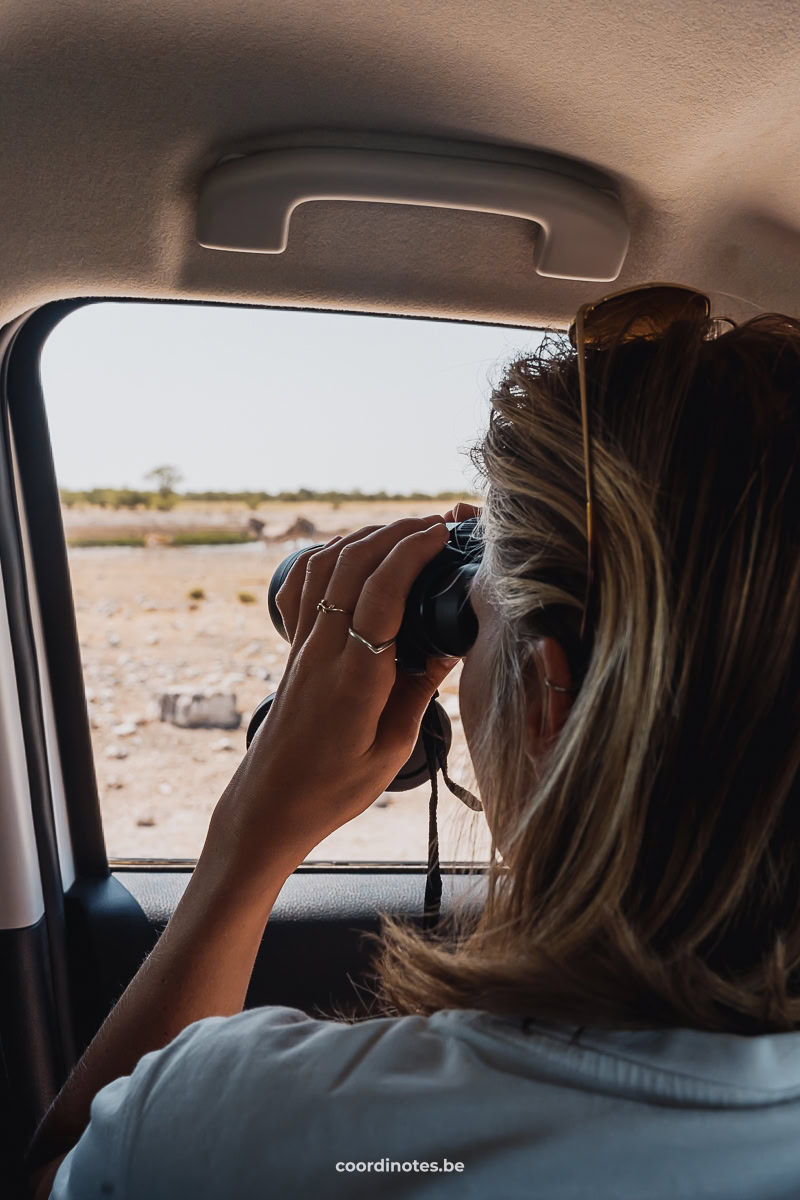
Safari
Increase your chances of spotting unique wildlife by booking a guided safari!
How many days
Etosha is so big that just one day is certainly not enough. We also believe that you should stay at least one night in the park, to spend an evening at one of the floodlit water holes. You will be amazed at how many animals you will see here. That is why we recommend allowing at least 2 days for Etosha, but 3 is even better. We stayed in Etosha for 4 nights and 5 days during our road trip through Namibia and we were able to spot many unique animals.
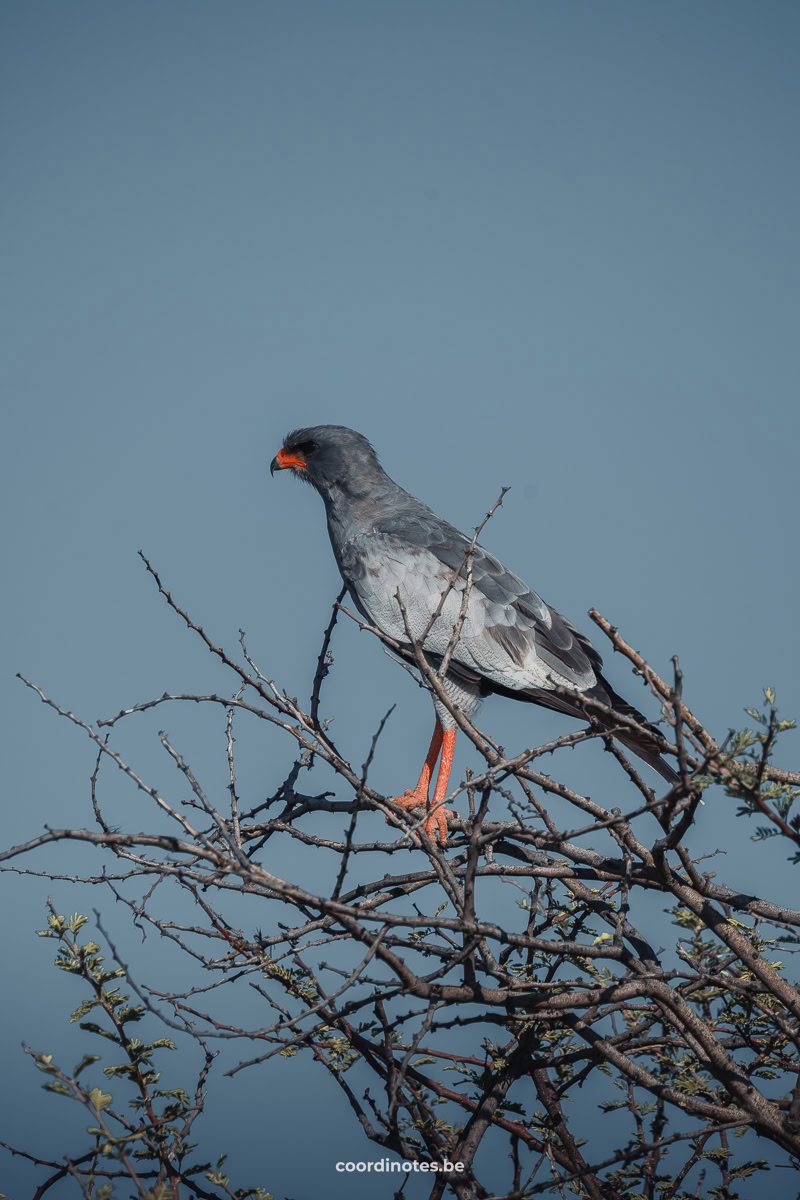
Best Time to Visit
The best time to go on safari in Etosha National Park is the dry season from May to October for the best game viewing conditions. During these months, there’s less vegetation and animals have to gather around the waterholes to find water, making it easier to spot and track them. The cooler weather makes the animals also more active during the day. The shoulder months of April, May, September, and October are just before or after the peak tourist season and offer a great balance between wildlife viewing conditions and pleasant weather. The park is less crowded and accommodations are less likely to be sold out than during the peak tourist season in July and August.
During the wet summer months, from October to April, you can expect rain showers and thunderstorms, which can affect road conditions. It can also get very hot, with temperatures sometimes up to 40 degrees C.
We visited Etosha in March and saw rain and thunder in the distance. The roads were also not in good condition. However, we did see a lot of animals at the waterholes.

Namibia
Camps and Accommodation in Etosha National Park
There are 6 resorts or ‘camps’ in Etosha National Park, 4 of which also have a campsite. Don’t expect the luxury of the lodges in the private game reserves around Etosha National Park, but given the price difference that’s not very surprising.
- Dolomite (no campsite)
- Olifantsrus
- Halali
- Onkoshi (no campsite and no waterhole)
- Okaukuejo
- Namutoni
Halali and Okaukuejo have the most spectacular floodlit waterholes. We stayed at the Halali, Namutoni, and Okaukeujo campsites and liked Okaukeujo best!
You can book your overnight stay in Etosha at www.nwr.com.na or enquire at www.etoshanationalpark.org or etoshanationalpark.co.za. Which camp is best for you to stay, in depends on what type of accommodation you prefer and which area you want to explore.
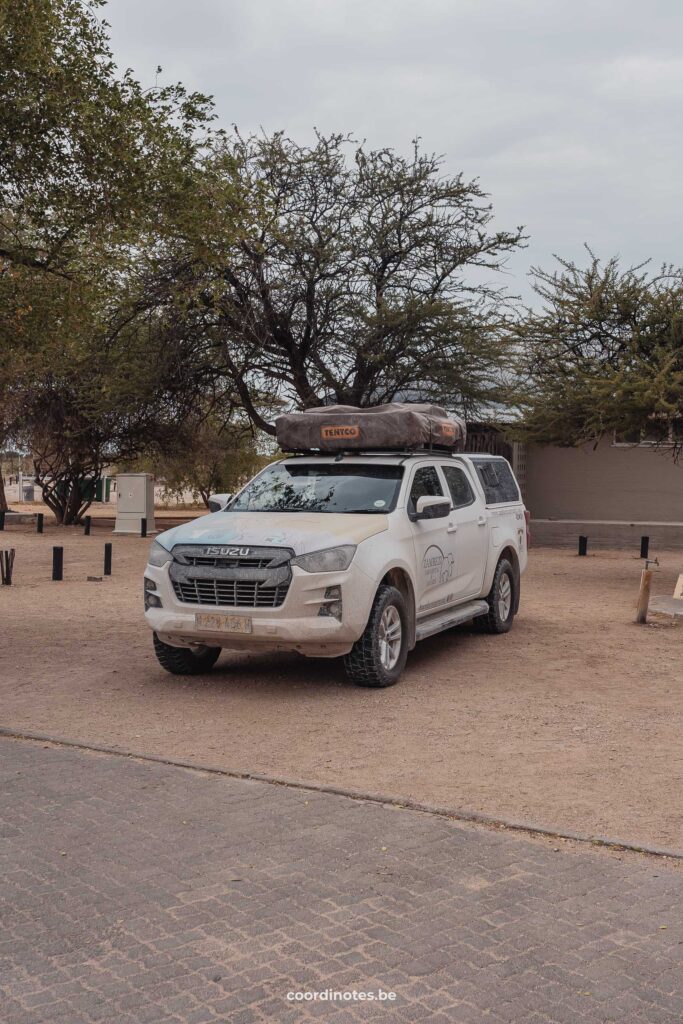

Safari
Increase your chances of spotting unique wildlife by booking a guided safari!
Food and Drinks in Etosha National Park
All rest camps except for Olifantsrus have a restaurant where you can grab some food. In most of the accommodations (not at campsites), breakfast is included. We thought the prices in these restaurants were quite high and the one meal we ate was not tasty at all.
If you are camping, you can prepare your own food at the campsite. You will find grocery shops at Halali, Okaukuejo, and Namutoni campsite, where you find biscuits, water, beers, soft drinks, pasta… However, the selection in these shops is rather limited, so we advise you to stock up for a few days at a supermarket before you enter Etosha National Park.
A tip we can give you is ‘Etosha Trading Post’. This is a small supermarket a few kilometers before the Andersson gate. They have quite a varied selection of products for reasonable prices.
Extra tips
Binoculars are a must
Not all animals in Etosha are right next to the road. That's why binoculars are a must. This also allows you to always keep a safe distance and see animals in more detail.
Start Early
Etosha National Park is big! Getting into the the park when it opens, allows you to explore the park before it becomes more crowded, animals are not yet disturbed and you have plenty of time to explore a whole area of the park.
Stick to the speed limit
The speed limit in Etosha National Park on paved roads is 60km/hr. Please, stick to this speed limit. Not only to protect the animals, but also so that you can spot animals much more easily. The condition of the roads in Etosha is also not always ideal.
Known the gate times and plan properly
Familiarize yourself with the gates' opening times and plan your route accordingly. Take the speed limit into account, allow extra time for remarkable animal sightings and make sure you always keep an eye on the time. You risk a very high fine if you are not at the gate before closing time.
Keep a safe distance from wildlife
Wild animals can behave and react very unpredictably. Always keep a safe distance between you and the wildlife to avoid potentially dangerous situations. Also, refrain from hanging out your window!
Never leave your car!
Never, ever, ever leave your car in the park, except in places where it is clearly indicated that it is allowed. This is not only for your own safety, but also for the safety of the animals.
Bring Water and Snacks
Bring enough food and drinks for on the road. It might take a while before you come across a rest camp. It is therefore always useful to have something to eat or drink for the little hunger or thirst. There are also picnic areas and toilets, where you can enjoy a little snack or get something from the back of your car.
Provide a map
In Etosha National Park, you will find a number of public rest camps with a large fence around them. Here, you find toilets, some shops with snacks and drinks and the main rest camps also have a restaurant and a petrol station. It is always useful to have a map, either a physical map or on your phone, so that you can plan your route, food, fuel or toilet stops during your safari.
Fuel up before entering the park
There are a few petrol stations in the park but we advise you to fuel up before you enter the gate. This way you don't have to worry about an empty gas tank during your safari.
Bring your passport
Normally you should always have your passport with you anyway, but we would like to explicitly point this out. To enter the park, you must show your passport. This is mainly to prevent poachers. This way, you avoid having to turn back at the gate and losing time to get your passport.
Malaria in Etosha National Park
Although using some form of repellent is always wise, the winter months in Etosha are entirely malaria-free.
During the wetter months, typically November to June, the majority of international health organizations recommend considering taking anti-malaria tablets. This is really just to be on the safe side. Local doctors, guides, and past park visitors all agreed that the risk of getting malaria remains minimal throughout the year, with recorded cases being infrequent.
Win-Win for everyone
Did you know that, if you buy or book something through our links, we receive a small commission?
However, you still pay the same and therefore have no extra costs! So a win-win for everyone. This way, we can continue to add even more travel inspiration and tips to this blog for your next adventure. Thanks a lot!
Thank you for visiting our blog
We hope you find our free travel guides and tips useful. If you want, you can support us virtually by ‘buying us a coffee‘.
Every contribution, no matter how small, is greatly appreciated and will help us continue to share our passion with you and grow this blog.
Win-Win for everyone
Did you know that, if you buy or book something through our links, we receive a small commission?
However, you still pay the same and therefore have no extra costs! So a win-win for everyone. This way, we can continue to add even more travel inspiration and tips to this blog for your next adventure. Thanks a lot!







